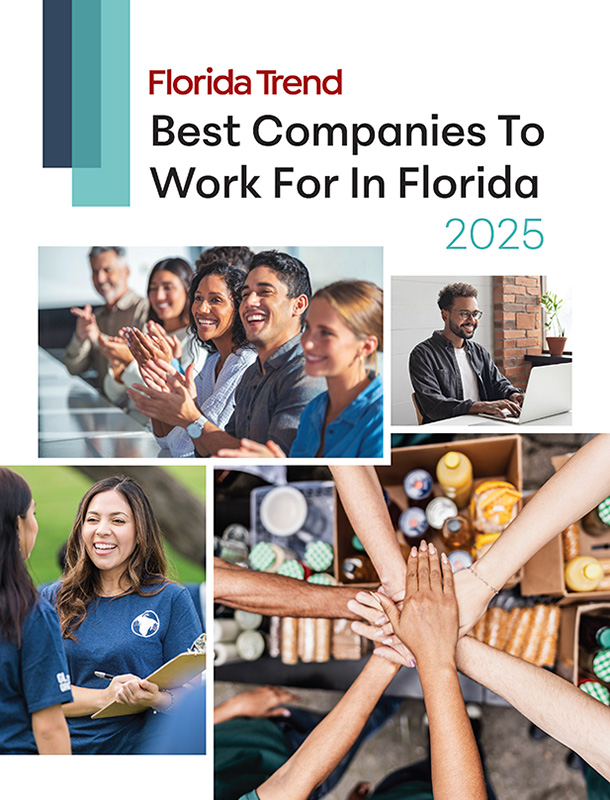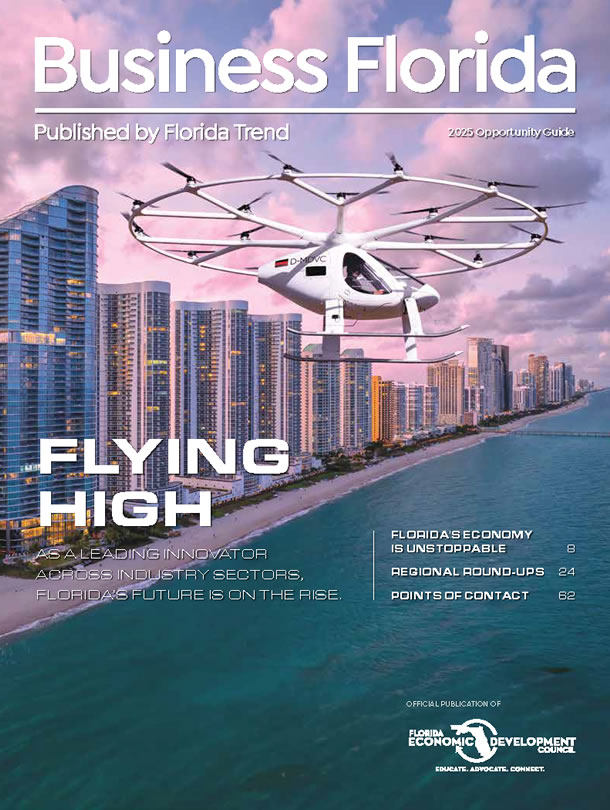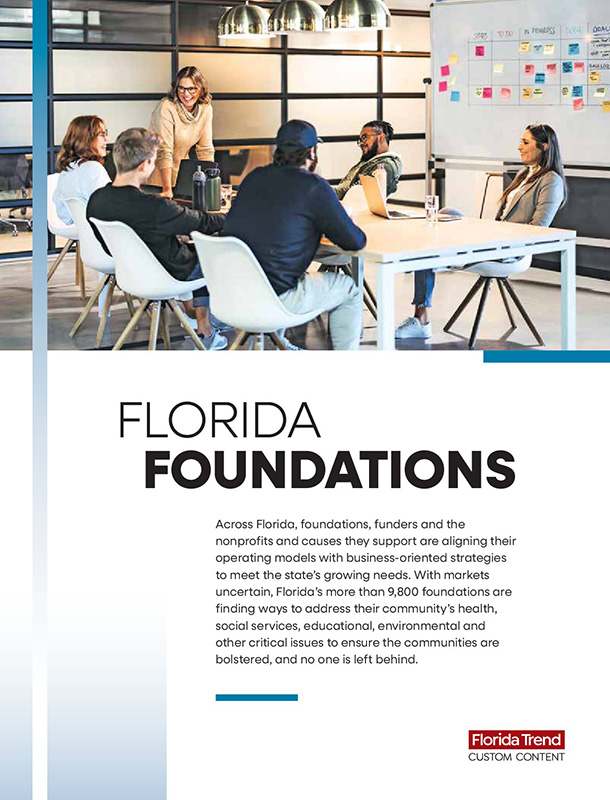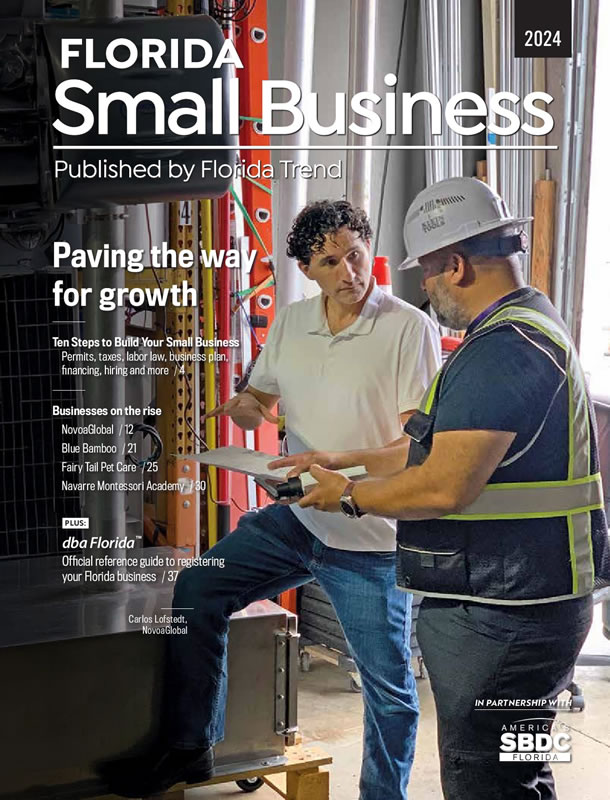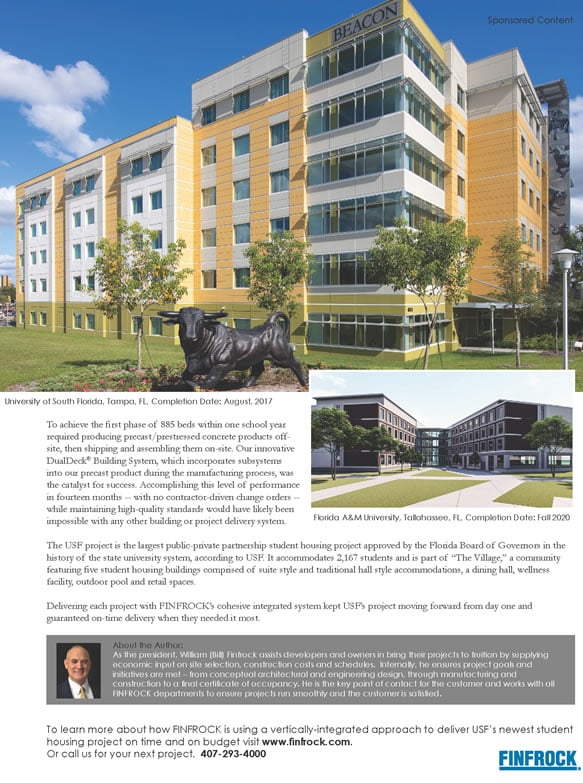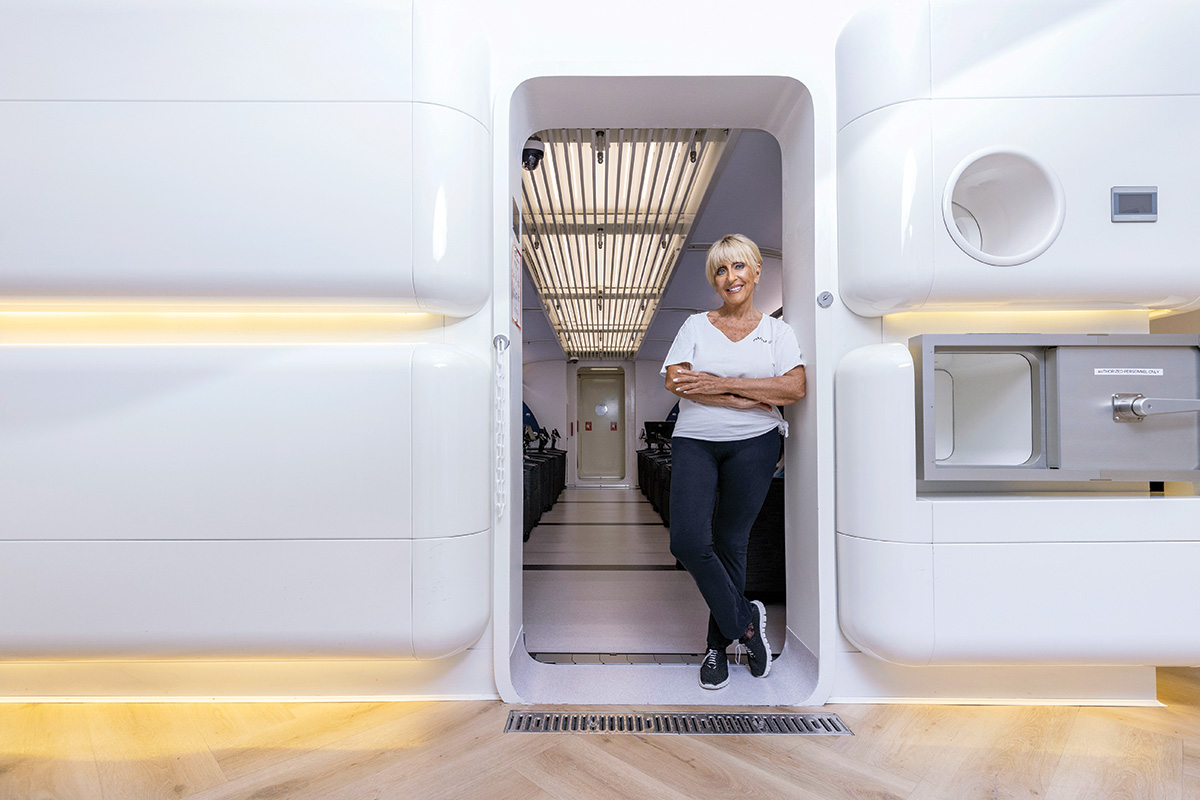Lynette Robbins knew something had to change in 2021.
She was 76, and following a long career of entrepreneurship — including helping to build the cosmetics company Mary Kay into a multimillion-dollar enterprise in the 1970s — she had semi-retired to The Villages. But her energy levels were dropping. She was growing worse at setting boundaries. And, before she knew it, she accidentally drove her Mercedes down a golf cart path.
“I didn’t realize I was in my car, and then I snapped out of it,” Robbins says. “That scared the bejesus out of me.”
In 2020, Aviv Clinics opened its first U.S. location just outside The Villages, one of the nation’s fastest-growing retirement communities. A 12-week treatment regimen costs about $60,000.
She promptly enrolled in a treatment she had seen advertised at several seminars — a program at the nearby Aviv Clinics promising to improve a variety of ailments, including age-related cognitive and physical declines, post-stroke recovery, long COVID-19 and traumatic brain injuries.
The stars of the show are the clinic’s four hyperbaric suites, which comprise the largest non-military hyperbaric center in North America. Each resembles an airplane cabin, sporting seven pairs of seats set across an aisle and faux windows glowing upon curved walls. After the chamber is pressurized to the equivalent of about 33 feet below sea level, clients strap on masks supplying 100% oxygen for 20 minutes. (The air we breathe is typically around 21% oxygen.) The masks come off for five minutes, and then go back on again, supplying patients with four 20-minute boosts of pure oxygen in each two-hour session.
The intended impacts are twofold, says CEO David Globig: Breathing in elevated oxygen levels should promote better blood flow to fuel body tissues. And alternating between different oxygen levels should trigger the release of stem cells, which act as the body’s repair system by replacing damaged cells.
The big idea — the one that costs patients around $60,000 for a 12-week treatment? As blood oxygen and stem cell levels are heightened, patients complete cognitive training and in-house workouts, mobilizing those stem cells to improve their body and brain health.
“Our data clearly shows that, once we get to 40 treatments in a row, I’m able to elevate stem cell levels back to that of an adolescent,” Globig says. “We’re talking about the cutting edge of evolving, of longevity.”
Aviv Clinics opened just outside of The Villages in 2020 — its first location in the world, chosen partly for its proximity to one of the country’s fastest-growing retirement communities. Its programming was developed at the Shamir Medical Center, the fourth-largest government hospital in Israel, and built from more than a decade of studies. Close to 1,000 clients have completed the U.S. program thus far.
It’s one of hundreds of clinics that have cropped up in the Sunshine State over the past few decades, dedicated to some iteration of “anti-aging,” “healthy aging” or “longevity” treatments that try to turn back time. Each adds to the growing global market for such therapies, valued at $25.1 billion in 2020, according to the analytics company Allied Market Research. It’s projected to reach $44.2 billion by 2030, driven by an aging global population, rising prevalence of chronic diseases, and increased demand for anti-aging products.
It’s an ambitious mission to unravel the complexities of aging and extend the human lifespan, and one that a horde of researchers are pursuing within Florida’s university system and elsewhere. But in the marketplace, some offerings creep into science fiction and may make consumers vulnerable to fraud and health risks.
“We all want a quick answer: What’s going to make us live longer and healthier?” asks Christiaan Leeuwenburgh, a professor in the University of Florida Department of Physiology and Aging and a researcher in the UF Institute on Aging. “But it’s complicated.”
THE SCIENCE OF LIVING LONGER
Humans have longed for longevity since the start of civilization.
The oldest-known account is a 4,000-year-old story from ancient Mesopotamia that explores a character’s obsession — and ultimate failure — to live forever. Medieval alchemists searched for the mythical Philosopher’s Stone, which they hoped could create an elixir of immortality. Spanish explorer Juan Ponce de León’s fabled Fountain of Youth, marked by promises to rejuvenate drinkers and bathers, still springs in St. Augustine.
But prolonged life isn’t just a figment of fiction. Researchers have already demonstrated how to extend the natural lifespans of model organisms like mice, worms and flies. The next step? Translating that to humans — and that’s already in progress.
“If these creatures can be modified to live longer, is there room for humans to do the same?” asks Karyn Esser, professor and chair of the University of Florida’s Department of Physiology & Aging. “I would say yes, I think that’s very feasible. (But) it’s going to be more complicated and more difficult.”
Florida’s demographics, meanwhile, have primed the state to be a hub for longevity science. It ranked second in the country for population growth for fiscal year 2023-24 — and residents aged 65-plus mark its fastest-growing age group, increasing 46% between 2010 and 2022.
Research institutions across Florida, from the Panhandle to South Florida, have embraced the pursuit.
The Florida Institute of Human and Machine Cognition opened its new $40-million biomedical research facility in downtown Pensacola last year to drive innovation in healthy aging. The University of South Florida’s Positive Aging Lab is studying how mindfulness, meditation and music could help aging adults. The University of Miami’s Center for Cognitive Neuroscience and Aging aims to better understand the aging brain and related disorders.
“In the future, I do think that aging will increasingly be seen as a manageable, measurable and potentially reversible condition,” says Zhe He, director of the Florida State University’s Institute for Successful Longevity. There, researchers are working on LabGenie, a new technology that helps older adults better manage their health, among other aging-related studies. “Things like AI, gene therapy, personalized medicine and regenerative therapies will revolutionize how we approach aging and longevity,” He says.
Florida is home to hundreds of “anti-aging” medical providers and clinics offering hormones, supplements and other products and services — but it’s a buyer-beware world.
CLINIC BOOM
As scientists look to the future, the market is already moving full-steam ahead.
While exact numbers are hard to come by, the American Academy of Anti-Aging Medicine’s website lists more than 450 providers in Florida as members. Established in 1992, the Boca Raton nonprofit promotes anti-aging therapies and offers education in the field with annual membership packages starting at $199. It also offers a search engine for different anti-aging products and services available in the state. Or simply Google “Florida anti-aging clinics” and behold the resulting inventory, spanning page after page after page, showcasing hundreds of companies in every corner of the state, each offering their own supposed antidote to old age.
The BEST Program, a Fort Lauderdale anti-aging clinic founded in 2000, sees around 500 clients a year. Among its offerings — which range from $150 to more than $1,000 a month — are injectables and IV therapies of everything from Vitamin B12 to NAD+, or nicotinamide adenine dinucleotide, a molecule thought to play a key role in slowing cellular aging. The clinic also provides peptides, or short chains of amino acids, said to boost a variety of bodily functions from sex drive to muscle tone to energy levels.
“Almost every patient we have in the practice is on some sort of peptide,” says Melanie Rook, a nurse practitioner with BEST. “We have actual validated evidence that these (treatments) are working. ... We don’t have the money to do the research to support these claims. It’s all anecdotal. But it’s definitely evident and clear, and the feedback is amazing.”
Stem cells and other regenerative therapies, which have growing use in biomedical research and therapeutics development, have also gone mainstream in the anti-aging industry. A 2016 study found 104 businesses marketing stem cell interventions in Florida — the second-highest cluster in any state at the time. Practitioners harvest the “miracle cells” from blood, tissues, bone marrow, embryos or umbilical cords. They’re administered to patients via infusion, injection or topical application in hopes of repairing and regenerating different parts of the body. Some companies claim their dietary supplements also enhance stem cell function.
Modern Aesthetic Centers — a med spa with several locations in Northeast Florida — touts on its website stem cell therapy as a solution for hair restoration, skin rejuvenation and vaginal renewal. The Keys Med Spa in Key West advertises anti-aging skincare products harvested from the umbilical cords of red deer. A variety of clinics and physicians around Florida offer regenerative stem cell therapy to help heal injuries and chronic pain.
Hormone replacement therapy is another hot commodity in the anti-aging industry. Testosterone, estrogen, progesterone and growth hormones are common in concoctions. The tailored treatments are designed to counteract deficits or natural declines in hormone levels, which can cause menstrual changes, weight fluctuations, fatigue and mood swings.
The Florida Anti-Aging Center in Satellite Beach is one of many clinics that offer hormone therapy in the state. The concierge medicine practice charges around $1,400 per year for a membership that includes hormone analyses, diet and exercise plans, and supplements.
“Now we’re talking about age reversal, not anti-aging,” says the center’s founder, Dr. Raymond D. Adamcik. He estimates he has treated up to 15,000 patients since 2009. “If we reverse the hormone decline, then the decline in quality-of-life reverses, and then the illnesses they’re developing also reverse. It’s the magic treatment out there that the public is — and even doctors are — completely uneducated (about).”
CAVEAT EMPTOR
Neil Charness, the former and founding director of the FSU Institute for Successful Longevity, remembers the earliest stem cell research materializing.
He also recalls what followed almost immediately: anti-aging clinics piggybacking off the emerging science, claiming to turn back time with their regenerative medicine — oftentimes, at exorbitant prices. The U.S. Food and Drug Administration, which regulates foods, drugs, cosmetics and medical devices, has since received reports of blindness, tumor formation, infections and more caused by unapproved stem cell treatments.
“In many cases, I suspect they’re pretty shady operations,” Charness says. “The consumer really needs to be very careful. ... If it isn’t an FDA-approved treatment, then it’s considered an experimental treatment.”
There are currently no pathways for FDA approval of treatments or therapies that specifically target aging, since aging is not considered a disease itself. Most longevity clinics operate in a gray area, in which their offerings may be FDA-approved for a certain use but are administered off-label at the professional judgment and discretion of practitioners in the name of combatting aging-related conditions.
Rupa Sikdar Lloyd, the Gainesville deputy managing shareholder of law firm GrayRobinson, estimates that most of her clients — including physician practices, med spas and startups — have at the very least “dipped their toes” into anti-aging treatments following consumer interest and demand. They must tread carefully, though. She says companies can find trouble if they try to market a drug or device for non-approved, off-label purposes.
“It’s not really about what is in the product. It’s more about what you’re saying the product does,” Lloyd says. “This is an area where many providers get caught in a trap because they start a therapy with a patient, (the) patient tells friends, the practice grows. And now the practice or med spa wants to advertise they offer this service since it has become popular among their existing patient base or clientele — but that advertising is what is illegal.”
Several arms of government attempt to regulate the fast-growing industry. On the national level, the Federal Trade Commission has oversight over consumer commodities and helps the FDA combat deceptive anti-aging claims to protect consumers.
In 2005, a federal court order required two Destin, Florida-based supplement companies — Great American Products and Physician’s Choice — to pay up to $20 million after they claimed their products would provide anti-aging benefits. It was the largest monetary judgment ever obtained in an FTC health fraud case at the time.
“Early explorers searched without success for a Fountain of Youth, and modern marketers promise that it can be found in pills and sprays,” said Lydia Parnes, former director of the FTC’s Bureau of Consumer Protection, in a 2005 statement. “Those promises are illusory. Unfortunately, no pill or spray can turn back the hands of time.”
At the state level, the Florida Drug and Cosmetic Act is administered by the Florida Department of Business and Professional Regulation to regulate drugs and cosmetics. The Florida Department of Health oversees health care practitioners, investigates complaints and enforces laws through fines, practice restrictions, license suspension or revocation, and more.
It’s an especially busy gig for the DOH: Of the 50,000-plus complaints filed against health care practitioners and facilities in fiscal year 2023-24, the Division of Medical Quality Assurance issued 505 cease-and-desist orders and referred 528 cases to law enforcement. It issued 263 emergency orders restricting or suspending health care licenses for practitioners posing immediate danger. Practitioners and facilities received more than 450 fines, 315 license suspensions and 260 license revocations among other disciplinary actions.
It’s unclear how many of those cases belonged to the anti-aging and longevity sector, but Florida Trend found a handful. Cases against Florida’s anti-aging clinics ranged from a Winter Garden med spa offering unlicensed laser hair treatments — resulting in a $1,000 administrative fine and continuing medical education — to unqualified employees at Cosmetica Plastic Surgery and Anti-Aging in Port St. Lucie performing “Brazilian butt lifts,” breast augmentations and tummy tucks.
The DOH did not accommodate multiple interview requests from Florida Trend for this report. But anti-aging clinic staffers tell Florida Trend that as competition continues to grow, illegitimate businesses threaten to undermine the industry.
“Almost 24 years ago, nobody was really doing this. And now on every corner, you’ve got competition,” says Rook of The BEST Program. “We see people that shouldn’t even be opening clinics, that don’t even have licenses. It’s frightening,” she continues, advocating for consumers to “do their due diligence and their research” when exploring anti-aging clinics and their offerings.
University researchers stress that consumers should check if marketed treatments are approved by the FDA for that use — which is considered the “gold standard” of medical efficacy. Scientists also encourage consumers to check if Medicare pays for the treatment and to review related scientific studies. Red flags may include conflicts of interest — which researchers are required to disclose when publishing studies — and low sample sizes.
“A lot of these (treatments) are built on a little bit of truth,” UF’s Esser says. “They get a little bit of data — largely from pre-clinical studies, maybe a little bit from a clinical study — and then they just extrapolate to make the marketing claim that this has been shown to impact aging. It’s about 100 steps away from what we really understand.”
BACK TO THE BASICS
If there’s one thing scientists can (mostly) agree on in the longevity community, it’s that lifestyle changes are the best way to help lengthen your lifespan. Even more importantly, they improve your “healthspan,” or the amount of time a person is healthy and free from disease or disability.
Research-based recommendations for longevity cover the usual advice: Maintaining a nutritious diet and healthy eating habits. Staying active and preserving muscle strength. Getting quality sleep consistently. Mitigating chronic stress. Not smoking. Reducing loneliness by taking part in regular social activities.
“There are all these claims about, ‘Hey, if you do this or that, you’re going to live longer.’ But if you don’t take care of your base, then it’s a problem,” says UF’s Leeuwenburgh. “All these other things might give a little benefit, but you’re really shooting yourself in the foot.”
Lifestyle changes don’t have to be monumental. Nichole Lighthall, director of the University of Central Florida Adult Development & Decision Lab, encourages sustainable choices tailored to each person: “There is no good decision-making. There’s no bad decision-making. It really is about the person’s internal value system and what works for them.”
And there are products that may support those goals. Blackout curtains, for example, could be a good investment to ensure quality sleep. Workout or diet programs could be worth the price if they help consumers eat healthier and stay active. Investing in cars with lane-drift detection, blind-spot detection or forward-collision warning systems could aid cognitive processing while driving.
Any other offerings? Buyers beware.
“If it seems too good to be true, it usually is,” Lighthall says, advocating for consumers to combat tempting adverts with logic. “If it really worked, everybody would be doing it.”
DANCING THROUGH LIFE
Robbins finished her stint at Aviv Clincs in April 2022, starting the treatment 10 days after a facelift. She couldn’t wear makeup or hairspray — because they’re flammable — into the hyperbaric chambers. She had to take her clinic-provided clothes — mostly made of cotton to prevent dangerous static electricity in the oxygen-rich environment — to a seamstress to fit her petite frame.
But, to her, it was worth it. Her post-treatment assessment showed improvements: Scans revealed increased blood flow, metabolic function and nerve function in the brain. Cognitive tests noted improvements in memory, language comprehension and speech. Her telomeres, the protective ends of DNA that shorten with age, grew by 24%.
Even more impactful, Robbins says, was the renewed sense of self the program granted her. And now, at 79, she goes dancing every night.
“It has made a tremendous, tremendous difference in my life, just to know that I’ve taken that extra step and invested time and money into me,” she says. “At my age, people have the money. They want to give it to their kids, but why not take care of their bodies, if possible, through this process?”
Robbins sees the program as the ultimate investment in one’s health — and so do staffers at Aviv Clinics, many of whom told Florida Trend they started off skeptical. Now, they credit the hyperbaric oxygen treatment as the foundation of their patients’ success, on which they layer other benefits like physical activity and nutrition, resulting in a holistic and personalized program.
Thanks in part to Shamir Medical Center research, Israel’s Ministry of Defense funds hyperbaric oxygen therapy for veterans with PTSD. But the FDA has not approved hyperbaric oxygen chambers as treatment for neurological conditions or healthy aging. That means Aviv Clinics’ price tag, which starts at $20,000 and can balloon upwards depending on treatment components, is not covered by insurance.
Staffers maintain the clinic’s dedication is to science over profit. They also acknowledge how, frankly, messy their industry has become for consumers to navigate.
“Over 20 years now, especially after we got into this, it became the wild, wild west. People are taking our publications and misusing them,” says Dr. Amir Hadanny, Aviv’s chief medical officer and head of research. “That has done so much damage to the science and how we’re seen by other associations, the fact that people try to (drive) their business. I think that’s what hurt the consensus.”
Even so, clients keep flowing into Aviv Clinics. Most stem from word of mouth, Aviv CEO Globig says. There’s also a growing stream of physician referrals — a source he expects to increase as the medical community accepts hyperbaric treatments more.
In the meantime, the enterprise is planning to expand its operations. Its leader offers his own advice for consumers on their longevity journeys:
“No. 1, be educated. Really read the literature. And No. 2, find the right clinical team to guide them on their path,” Globig says. “There’s so much out there in today’s world. I don’t think anyone can do it on their own.”
Aging Perceptions
Why are so many Americans anti-aging — to the point where the longevity industry has gained such a following?
Nichole Lighthall, director of the University of Central Florida Adult Development & Decision Lab, credits that perception to the country’s medicalized aging system.
Growing older, she says, is treated as a medical issue to be solved within a for-profit health care system. The stereotypical fate for elders in this system is ending up in a nursing home, where they’re cared for by people who aren’t their relatives. That drives consumers to buy into anti-aging products and services to prevent that future.
“This concept of anti-aging, the way it’s so negative in the United States, it has something to do with this medicalization. Because nobody wants to be locked up in a home,” Lighthall says. “That has lots of implications — financial, social, emotional. ... This is something older people are really afraid of.” She advocates for more positive phrasing, like “healthy aging.”
The Boca Raton-based
American Academy of Anti-Aging Medicine sponsors anti-aging conferences and seminars around the country, including its recent “Spring Congress” in West Palm Beach, which featured presentations on everything from weight-loss drugs to “microbiome modulation” to “telomere biology.” The organization boasts of 26,000 members across the globe.
U.S. Life Expectancy
In 1900, the average American’s lifespan was about 47 years old, according to the National Center for Health Statistics. That number has grown leaps and bounds since then. But life expectancy at birth dropped for the second year in a row in 2021 for the U.S., declining from 77.0 to 76.1 years — taking the American lifespan to its lowest number since 1996. That drop, plus a 1.8 year drop in 2020, was the biggest two-year decline in life expectancy since 1921-23 and is largely attributed to the COVID-19 pandemic and opioid-related deaths. By 2024, the number had crept back up to 79 years old.
Living healthier may mean living longer — and cheaper.
Florida’s median long-term care costs per year currently range from $31,200 for adult day care to $138,700 for a private room at a nursing home facility, according to financial services company Genworth.



